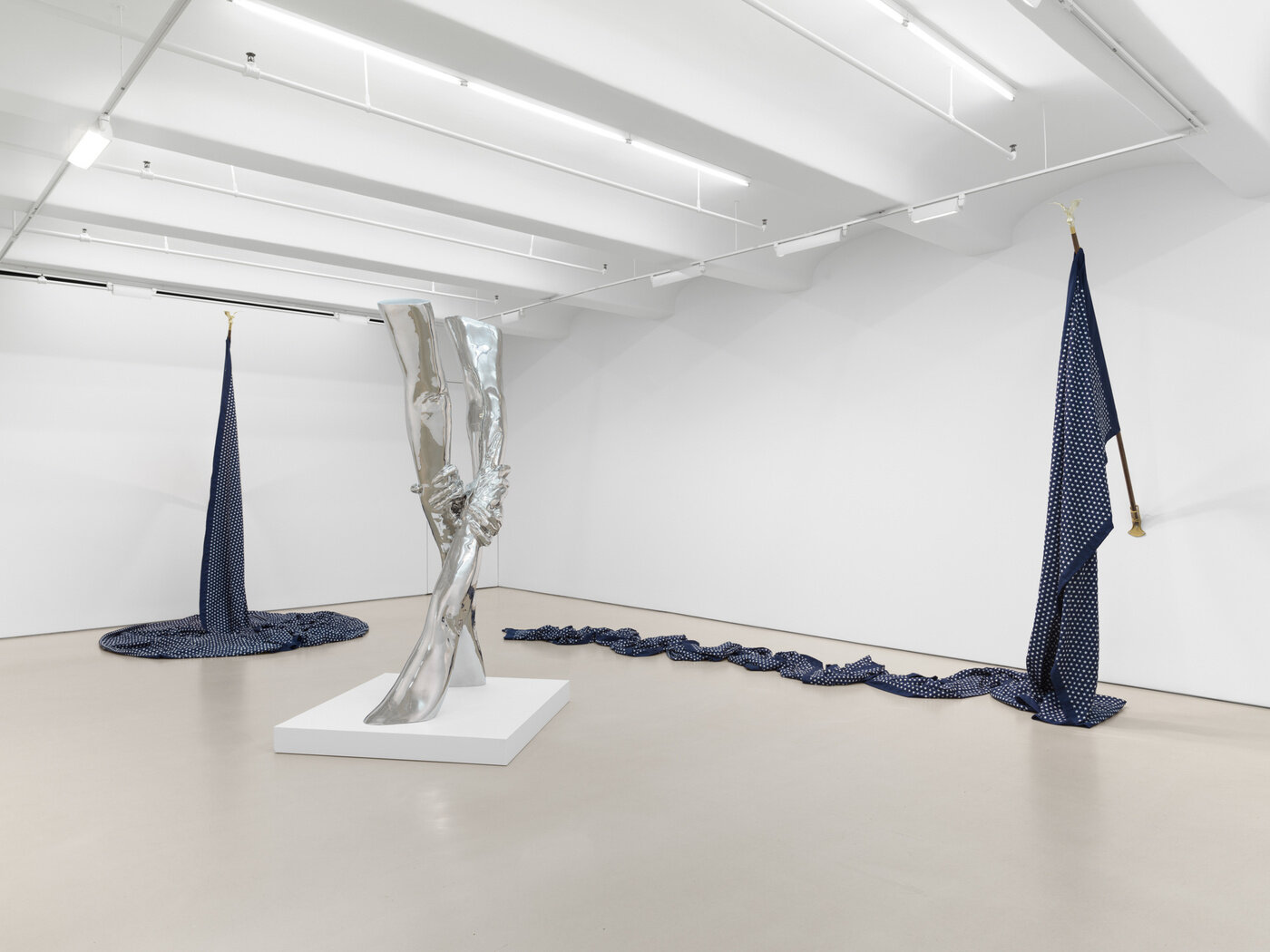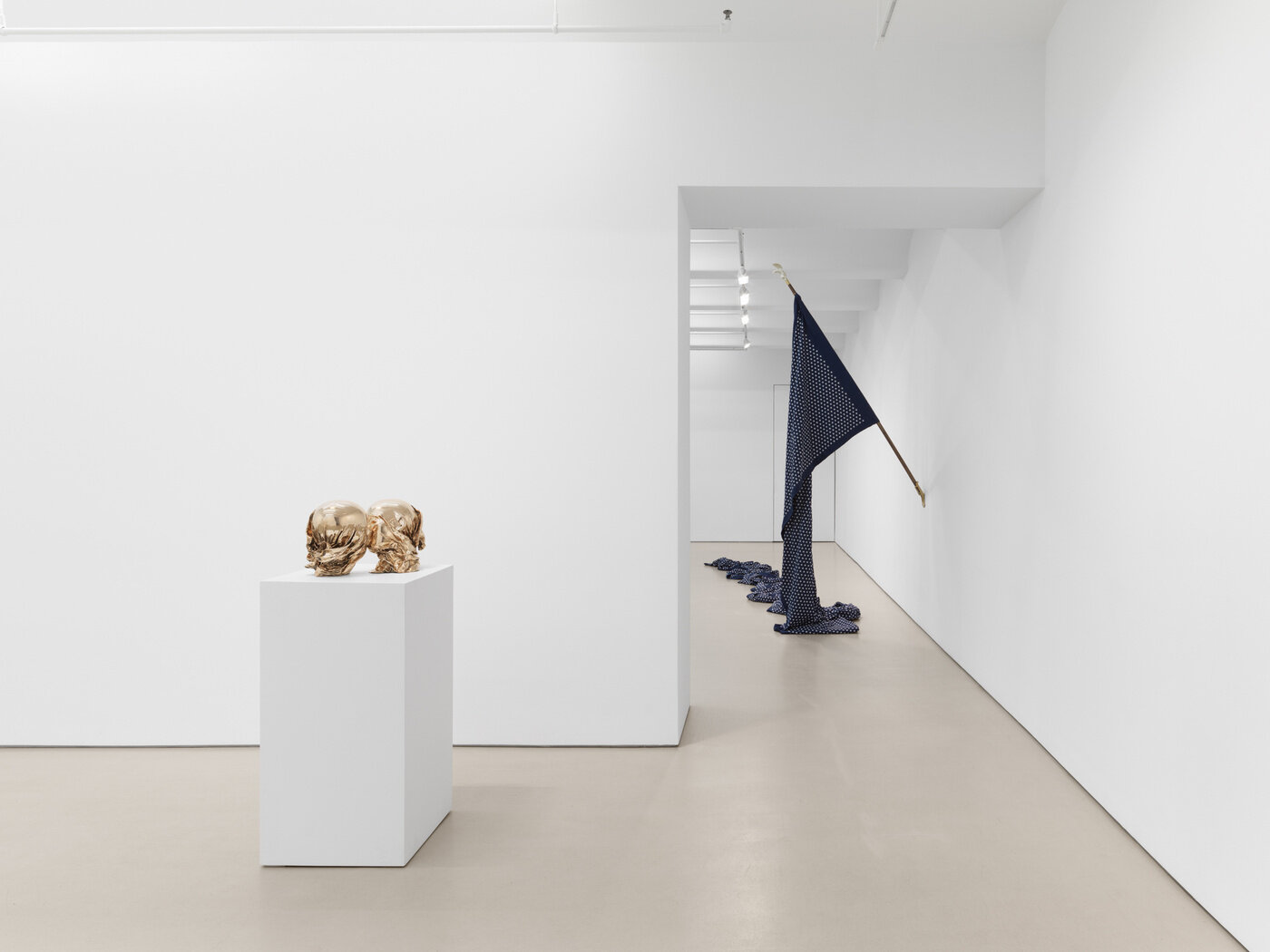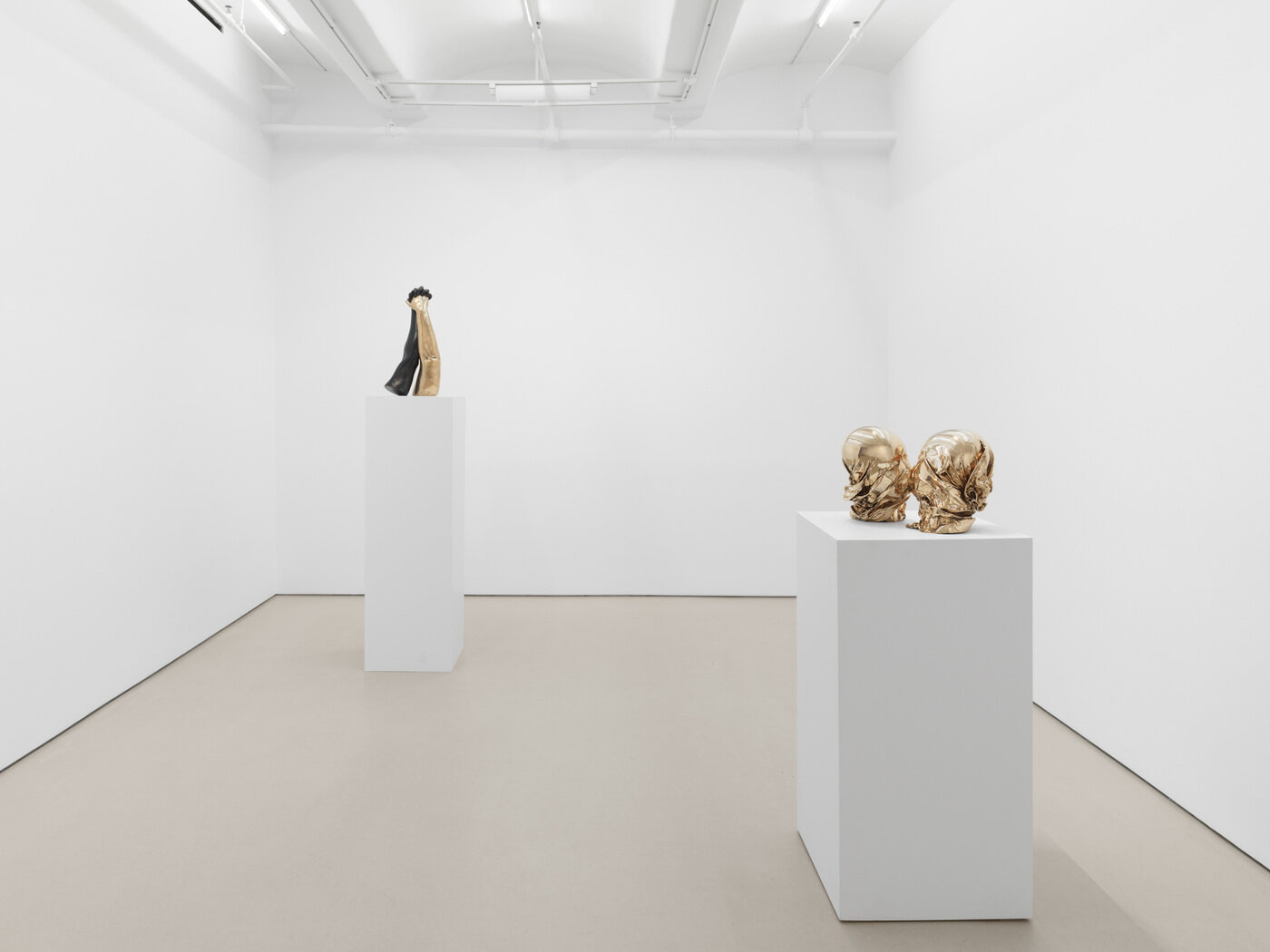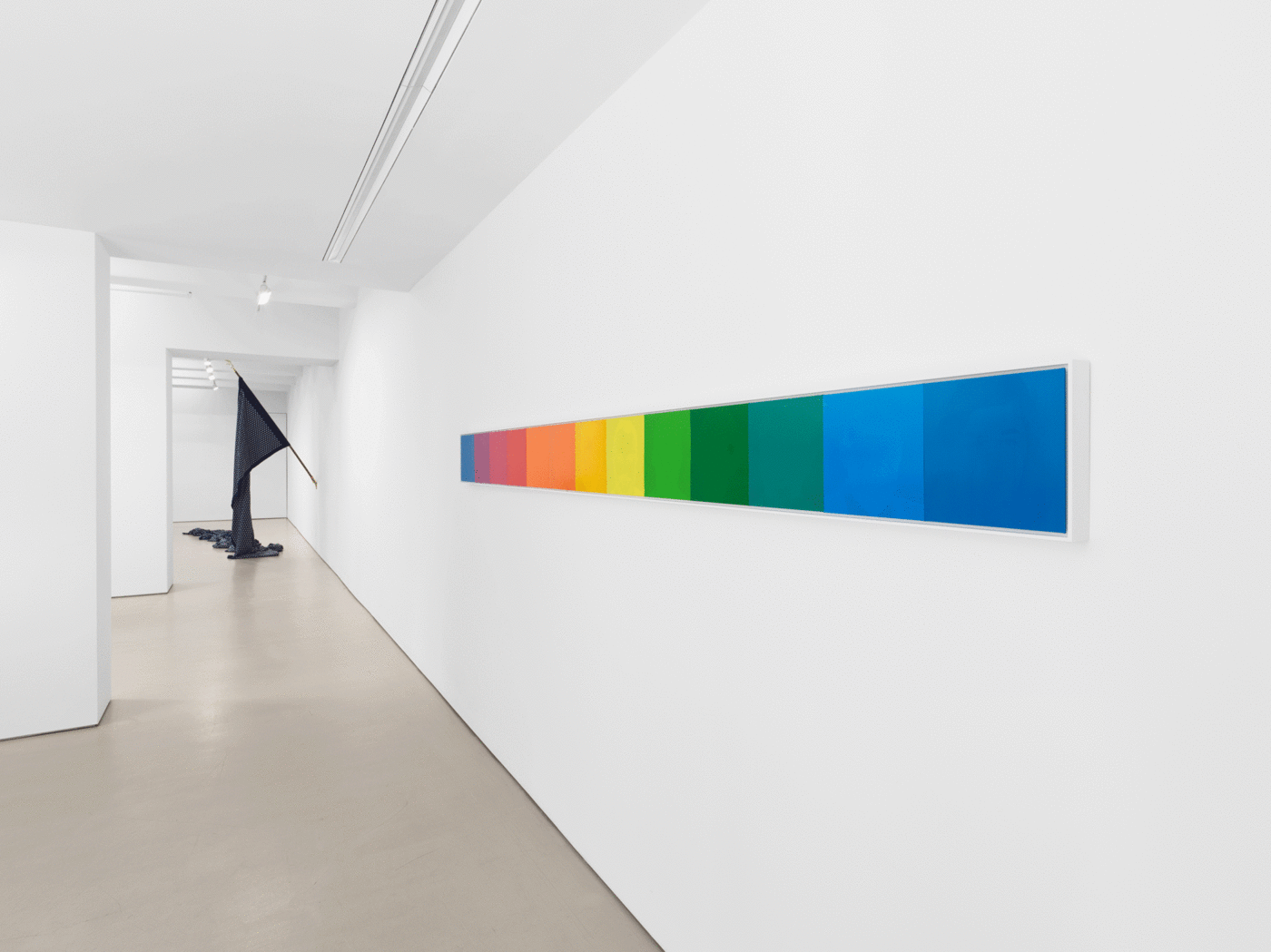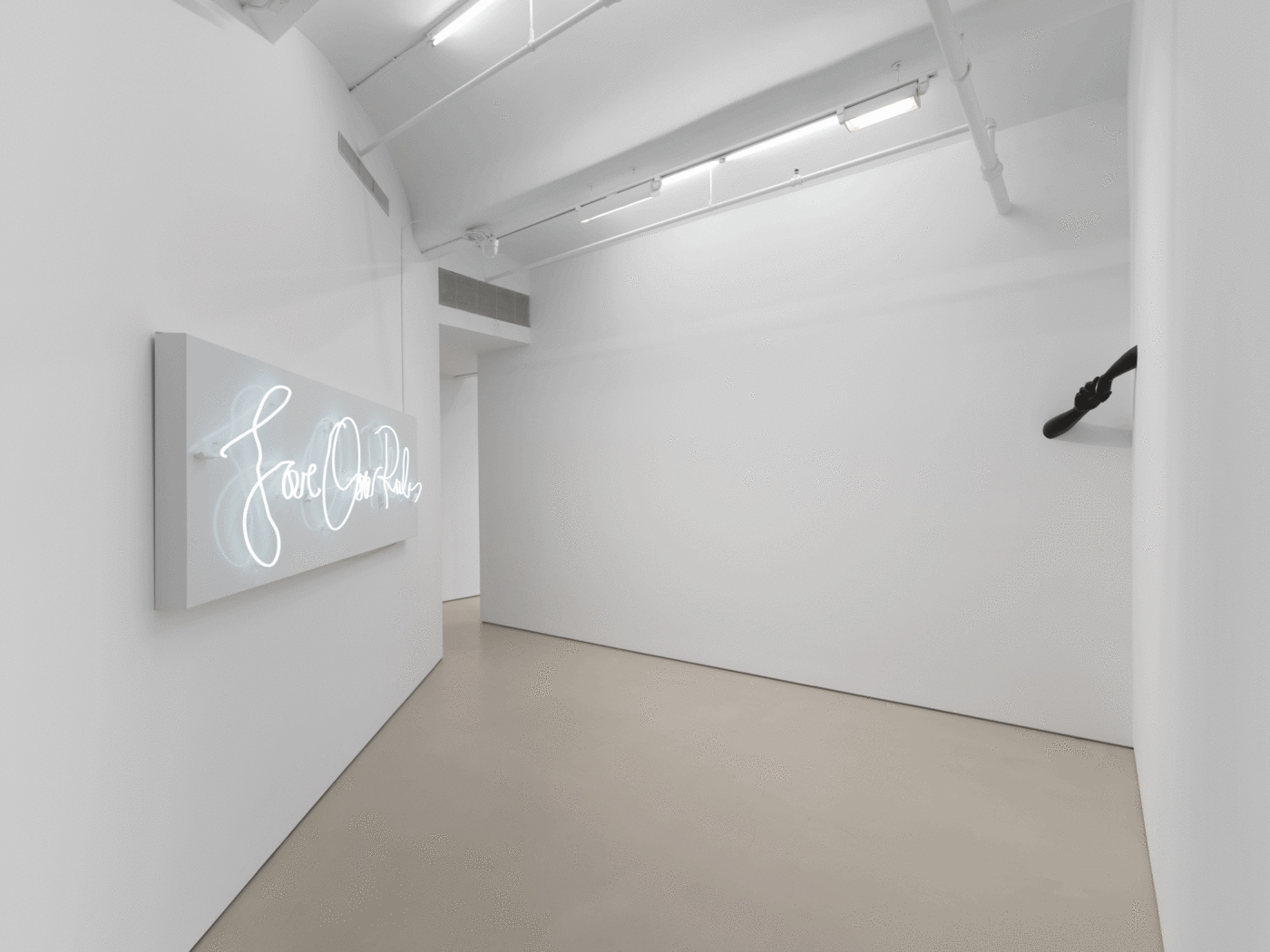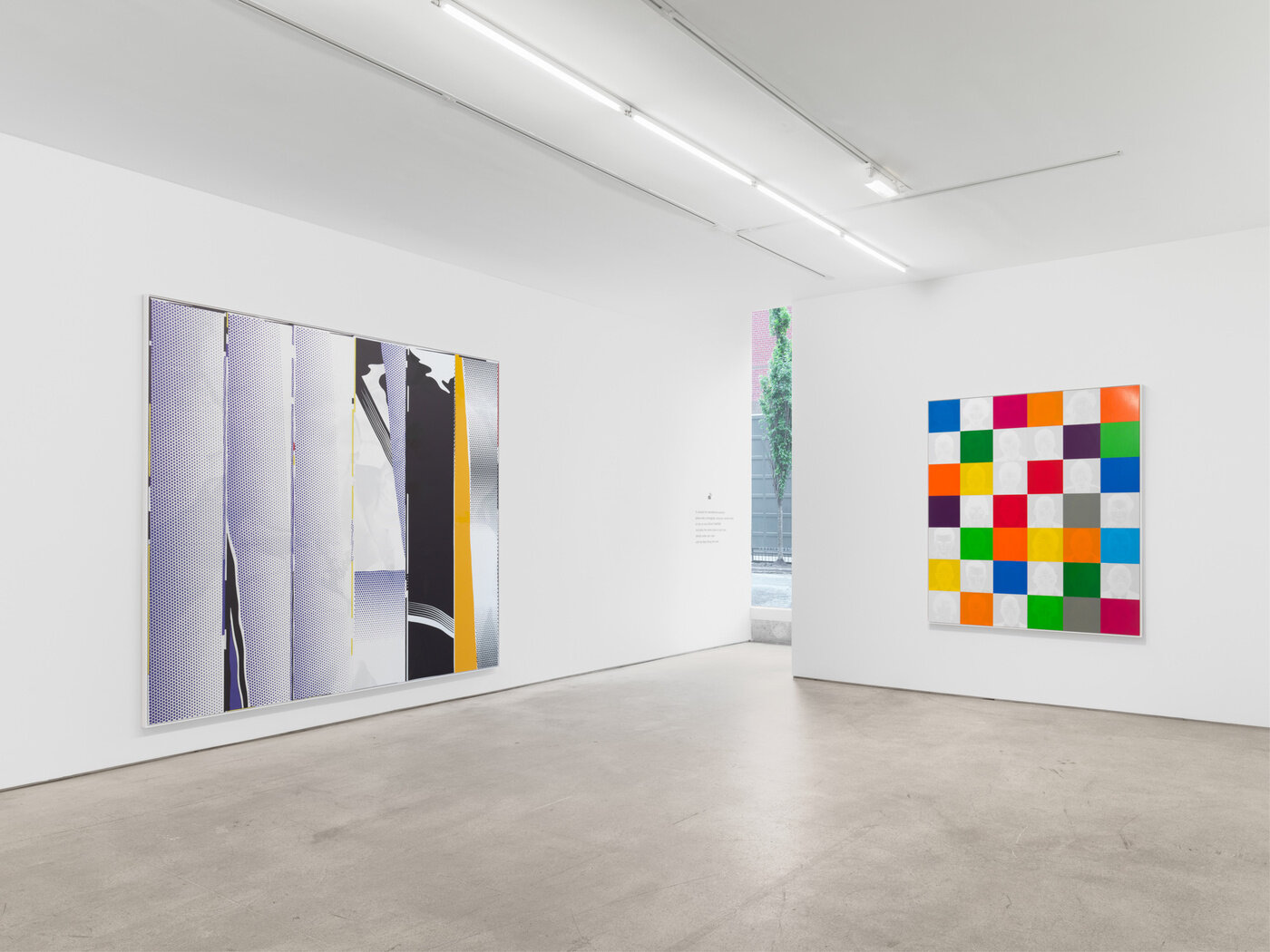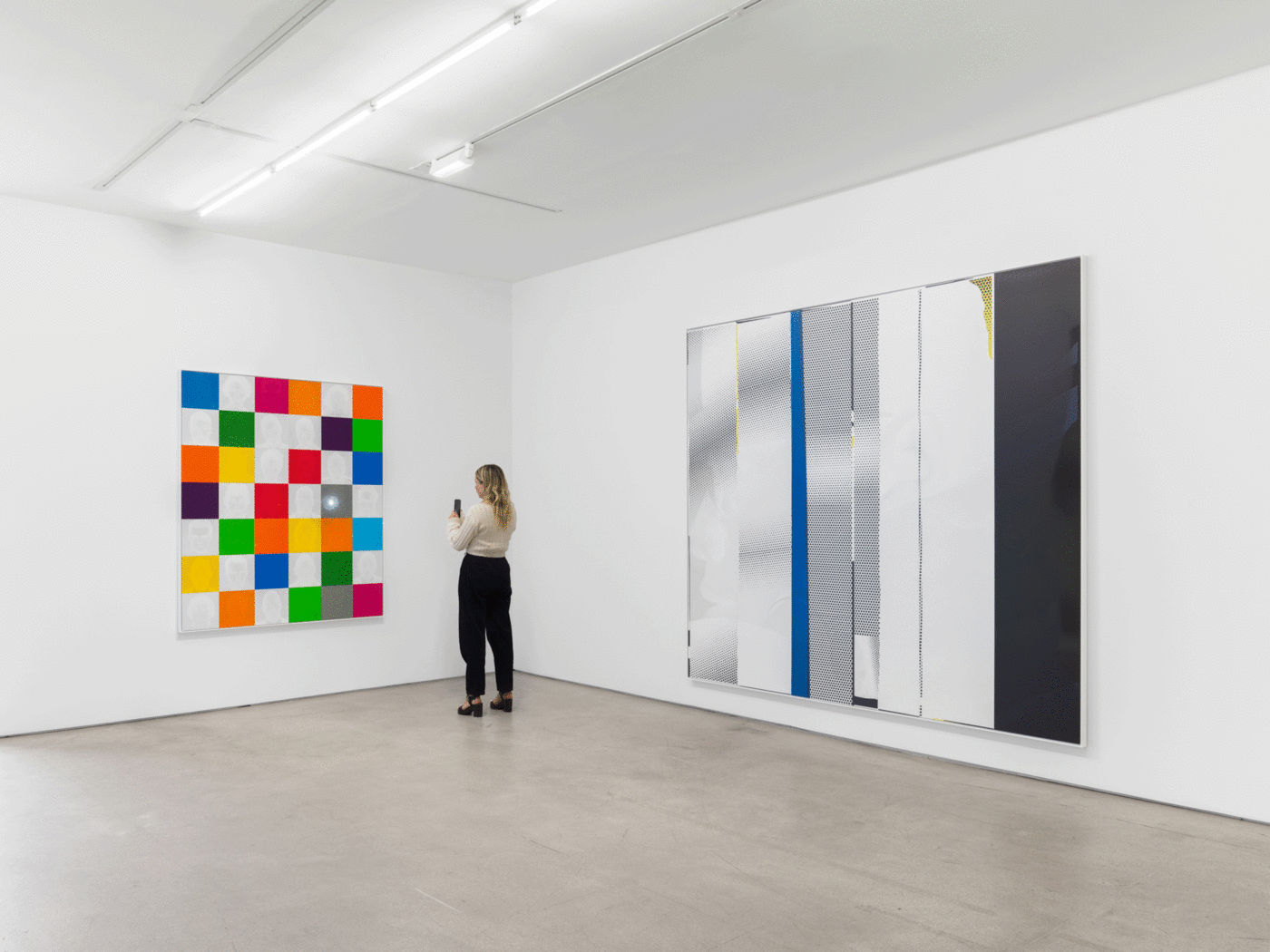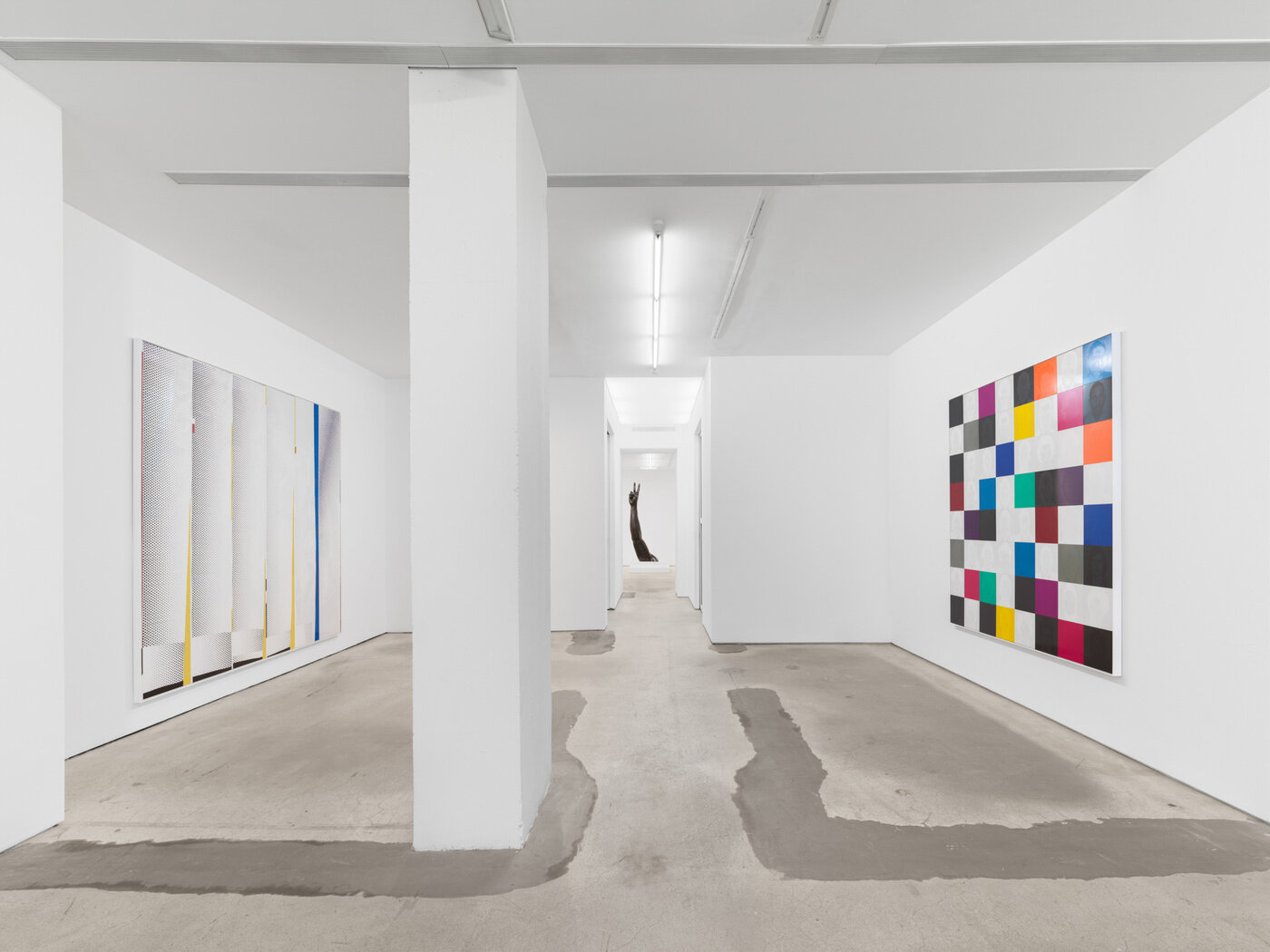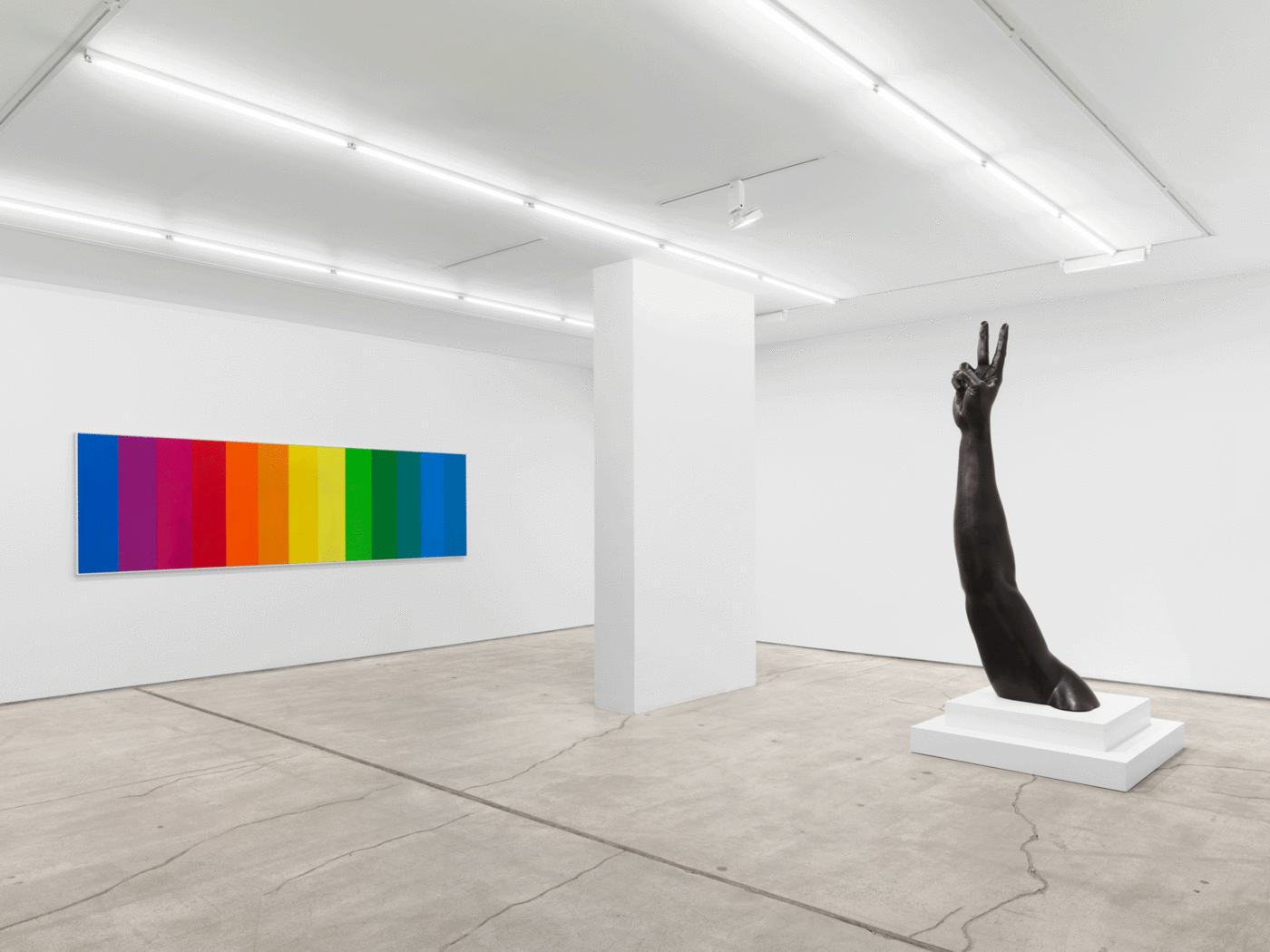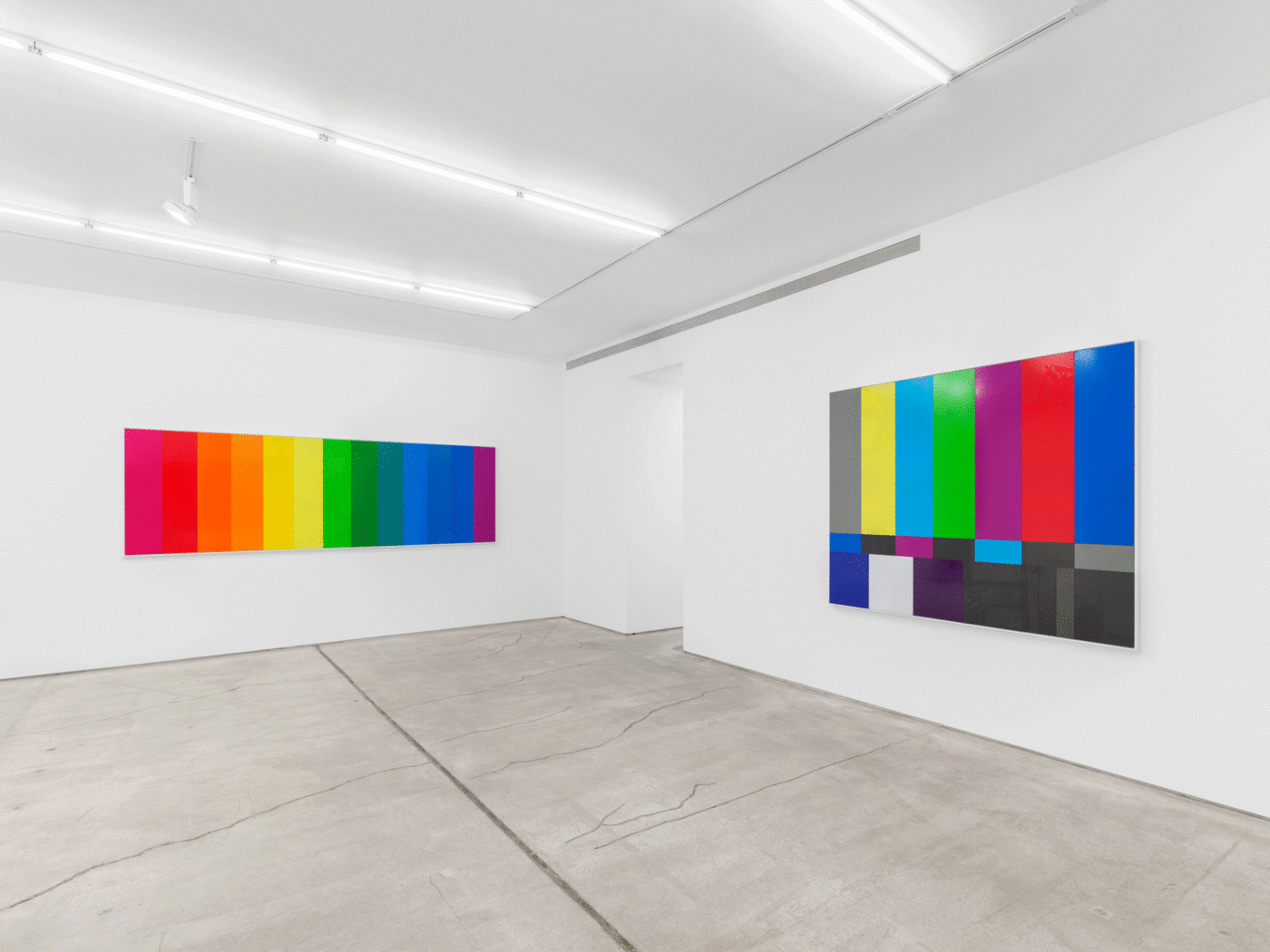Hank Willis Thomas: Everything We See Hides Another Thing
Works (Tap to zoom)
Press Release
Hank Willis Thomas
Everything We See Hides Another Thing
513 West 20th Street & 524 West 24th Street
September 8 – October 29, 2022
Opening reception Thursday, September 8, 6–8pm
“Everything we see hides another thing, we always want to see what is hidden by what we see. There is an interest in that which is hidden and which the visible does not show us. This interest can take the form of a quite intense feeling, a sort of conflict, one might say, between the visible that is hidden and the visible that is present.” ― René Magritte
Jack Shainman Gallery is pleased to present Hank Willis Thomas, Everything We See Hides Another Thing across both Chelsea spaces. Comprising large-scale sculptures, mixed media textile works, and retroreflective prints, this exhibition of new work continues Thomas’ exploration of color theory, gestures of unity and strength, and the many ways we can look at a given historical moment or subject.
Thomas’ retroreflective works exhibit an interest in the repetition of mass-produced imagery and attention to the hand of the artist, referencing works by Andy Warhol and Robert Rauschenberg. Trained as a photographer, Thomas has always focused on framing and context, and often appropriates archival images along with new or rarely used technical processes. Viewers are prompted to shift their position or use a tool to see a moment in its entirety. For instance, by activating his retroreflective work with a flash photograph, the viewer reveals the latent image, thereby stepping into the role of image maker. In both form and content, the works reveal multiple ways to look at a given historical moment or subject.
In these most recent retroreflective works, Thomas draws aesthetic inspiration from artworks by Ellsworth Kelly and Roy Lichtenstein—artists who investigated color, shadow, perception, and popular culture—in addition to television test patterns and color bar configurations. Interested in a conceptual analysis of color theory, Thomas layers each composition with historical moments of protests and protestors in order to provide a greater commentary on what is left in and out of the frame, as well as the aesthetic information that can be derived from isolating parts of an image. By obscuring elements of the image, and prompting the viewer to reveal them, Thomas makes Magritte’s concept of “a sort of conflict [...], one might say, between the visible that is hidden and the visible that is present” not just conceptual but experiential.
As Thomas continues his internal exploration of what it means to be an “American,” he has begun to view nation states as creative collaborations, and artists as the greatest problem solvers. The gesture-focused sculptures throughout the exhibition reference fleeting moments full of tension, ones in which we hold together while outside forces try to pull us apart. In the artist’s punctum series, inspired by Roland Barthes’ photographic theory of punctum, which refers to the detail in an image that pierces or stays with the viewer, Thomas uses sculpture to memorialize significant moments by isolating these gestures and investigating their ability to communicate ideas about individual and collective identity, ambition, perseverance, unity, and community.
When conceptualizing a large-scale monument to Martin Luther King Jr. and Coretta Scott King, Thomas reflected upon the King legacy and one image—one idea—emerged above the others: Embrace. On multiple occasions, the nation witnessed the Kings embracing on the frontlines of a march. A monument that captures this gesture declares that love is the ultimate weapon against injustice. In evoking the love shared between the Kings, their commitment to each other, their community and country, The Embrace is about what we share, not what sets us apart. By highlighting the act of embrace, this memorial shifts the emphasis from singular hero worship to collective action. In this exhibition, visitors will be able to see a domestic-sized version of the large-scale public monument, which will be unveiled in Boston Commons in January 2023.
In line with the theme of memorialization, Thomas has continued his embroidered star flag series, Falling Stars. Each embroidered star represents a life lost by gun violence in the United States - 14,916 in 2018, 15,433 in 2019 and 20,923 in 2021. Gun violence is a perpetual issue in the United States, and for many Americans, a personal one. It was for Thomas when his best friend and cousin, Songha Willis, was murdered in Philadelphia in 2000. The grimmest fact to face in the wake of Songha's death was that it was not unique in this country. In 2018 Thomas said, “There have been more than 500,000 people [shot to death] in the United States since my family lost Songha. It is impossible to measure the magnitude and impact of this societal loss. While this installation is a memorial to the thousands of people who were killed by guns, it also pays homage to the countless loved ones who carry perpetual grief and trauma as unacknowledged victims of gun violence in America.”
Concurrently on view is The Gun Violence Memorial Project at The National Building Museum in Washington DC, through March 2023, which is a tribute to the thousands of lives lost to gun violence in America. Conceived by Thomas and MASS Design Group in partnership with gun violence prevention organizations Purpose Over Pain and Everytown for Gun Safety Support Fund.
Additionally, Another Justice: US is Them, a group exhibition featuring and co-curated by Thomas, is on view at the Parrish Museum, Water Mill, New York, through November 6, 2022, presented by the artist and For Freedoms, the collective he co-founded in 2016. Their current initiative, A Citizens Guide to Healing, has served as a source of inspiration for this exhibition.
Also opening this fall is a large-scale collaborative artwork by Hank Willis Thomas and his mother and scholar, Dr. Deborah Willis, on the facade of the historic Church of the Heavenly Rest in New York. The Black Civil War Soldier: A Visual History of Conflict and Citizenship (Remember me), includes found text reading, “Remember me,” from a 1866 vintage postcard discovered by Thomas at the Amistad Center of Art and Culture at the Wadsworth Atheneum Museum of Art in Connecticut, alongside images from Willis’ research and book of the same name. The Church of Heavenly Rest, founded in 1865 by American Civil War veterans, was meant as a memorial to soldiers who had died in the American Civil War, and the artwork honors them and the many individuals who actively participate in society, but who are not often recognized or remembered.
Hank Willis Thomas is a conceptual artist working primarily with themes related to perspective, identity, commodity, media, and popular culture. His work has been exhibited throughout the United States and abroad including the International Center of Photography, New York; Guggenheim Museum Bilbao, Spain; Musée du quai Branly, Paris; Hong Kong Arts Centre, Hong Kong, and the Witte de With Center for Contemporary Art, Netherlands. Thomas’ work is included in numerous public collections including the Museum of Modern Art, New York; Solomon R. Guggenheim Museum, New York; Whitney Museum of American Art, New York; Brooklyn Museum, New York; High Museum of Art, Atlanta, and the National Gallery of Art, Washington D.C. His collaborative projects include Question Bridge: Black Males, In Search Of The Truth (The Truth Booth), and For Freedoms, which was awarded the 2017 ICP Infinity Award for New Media and Online Platform. In 2012, Question Bridge: Black Males debuted at the Sundance Film Festival and was selected for the New Media Grant from the Tribeca Film Institute. Thomas is also the recipient of the Guggenheim Fellowship (2018), AIMIA | AGO Photography Prize (2017), Soros Equality Fellowship (2017), and has been a member of the New York City Public Design Commission. Thomas holds a B.F.A. from New York University and an M.A./M.F.A. from the California College of the Arts. He received honorary doctorates from the Maryland Institute of Art and the Institute for Doctoral Studies in the Visual Arts in 2017.
Gallery hours are Tuesday to Saturday from 10am to 6pm. For press inquiries please contact Carolina Adams, Sutton, carolina@suttoncomms.com, +1 212 202 3402. For other inquiries please contact the gallery at info@jackshainman.com.


